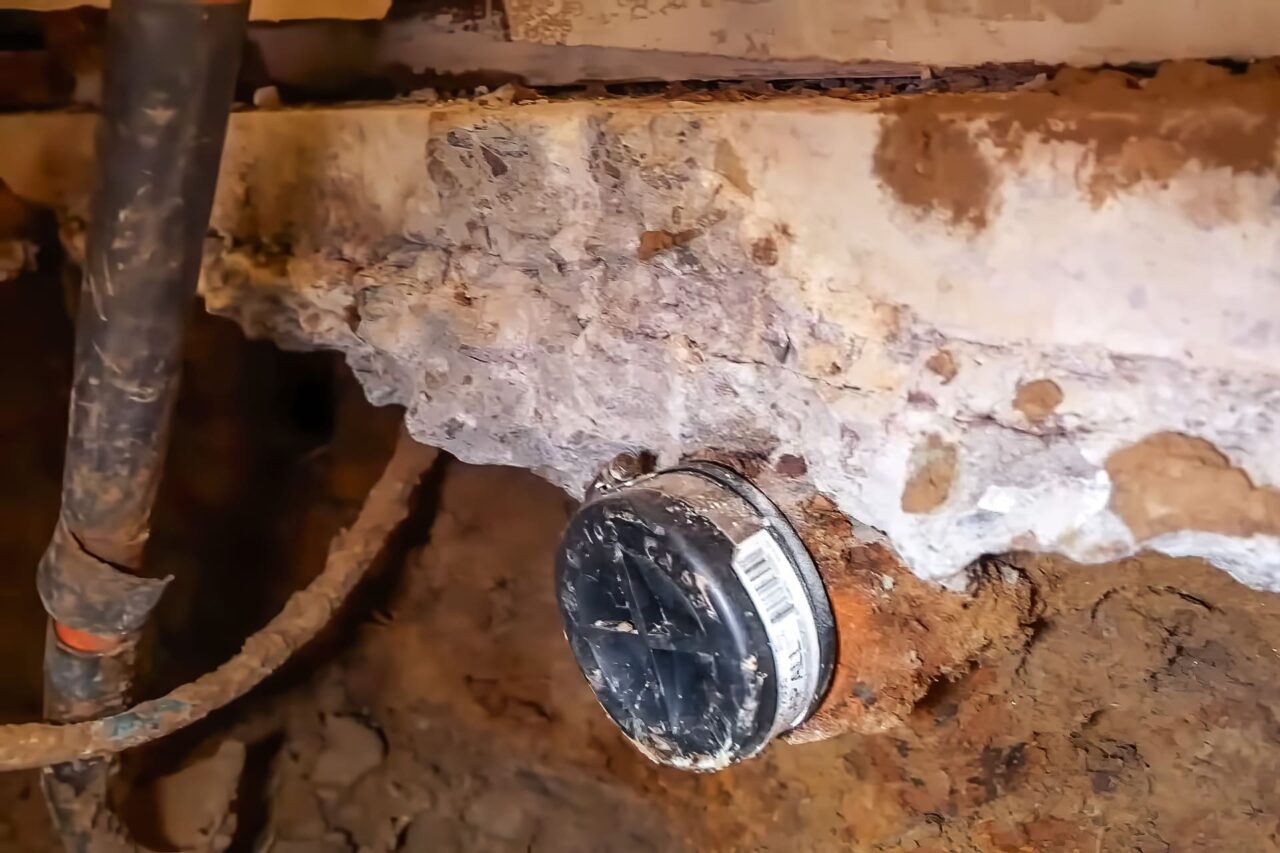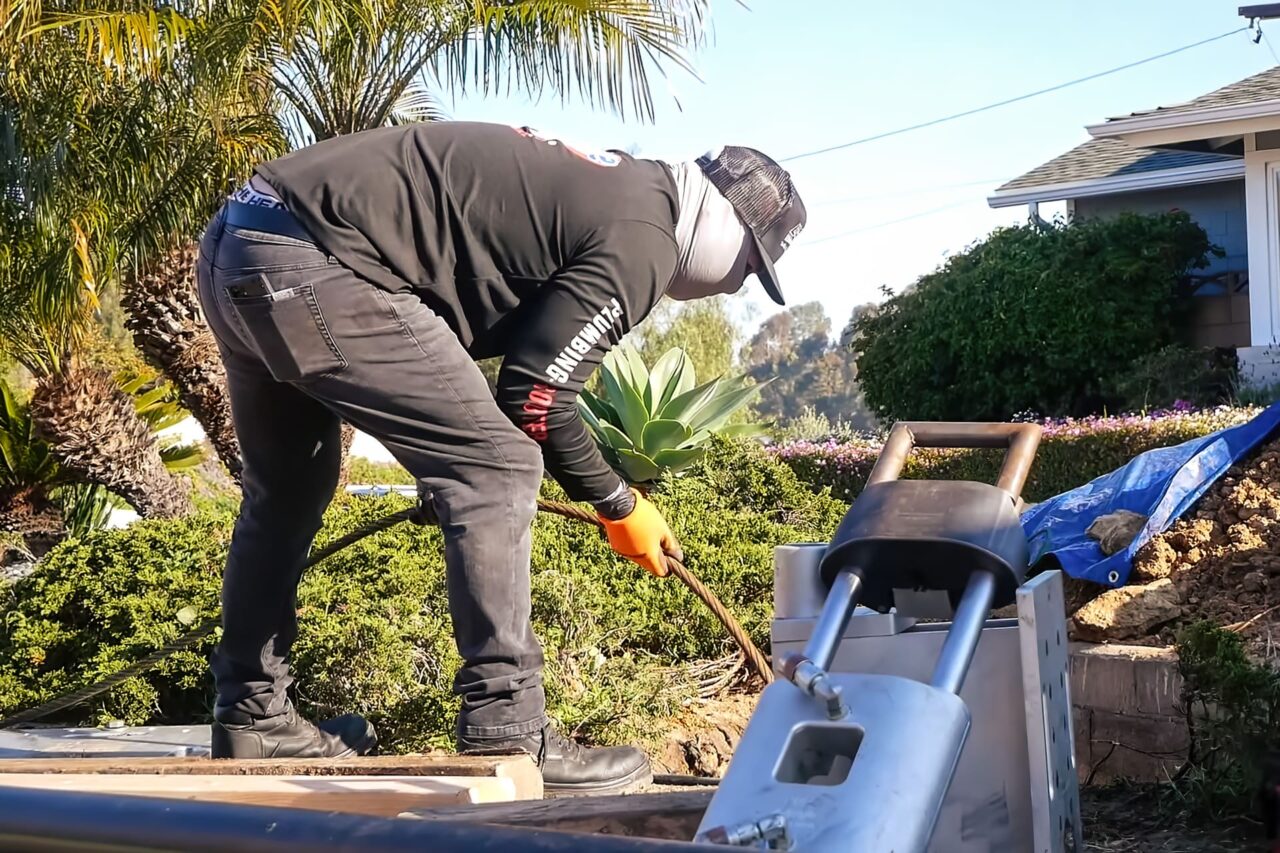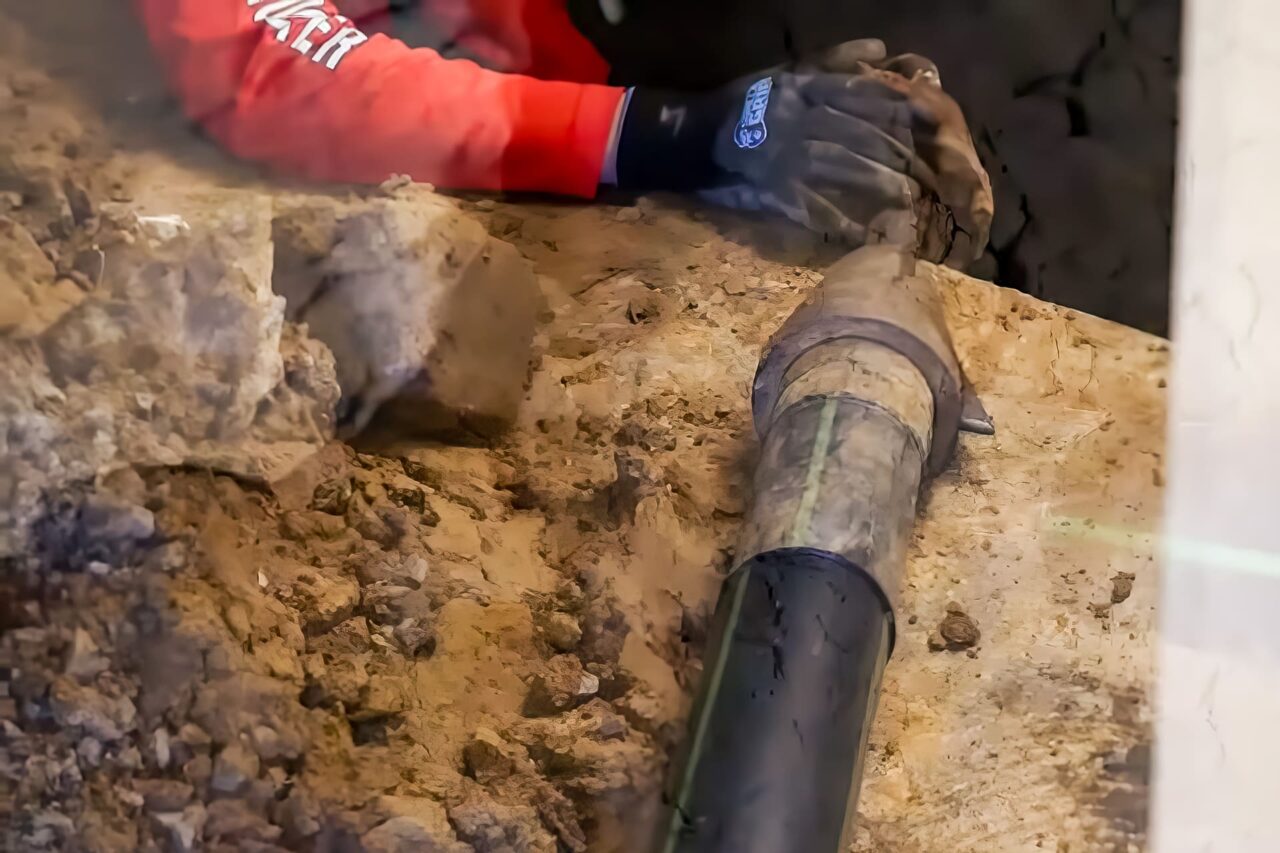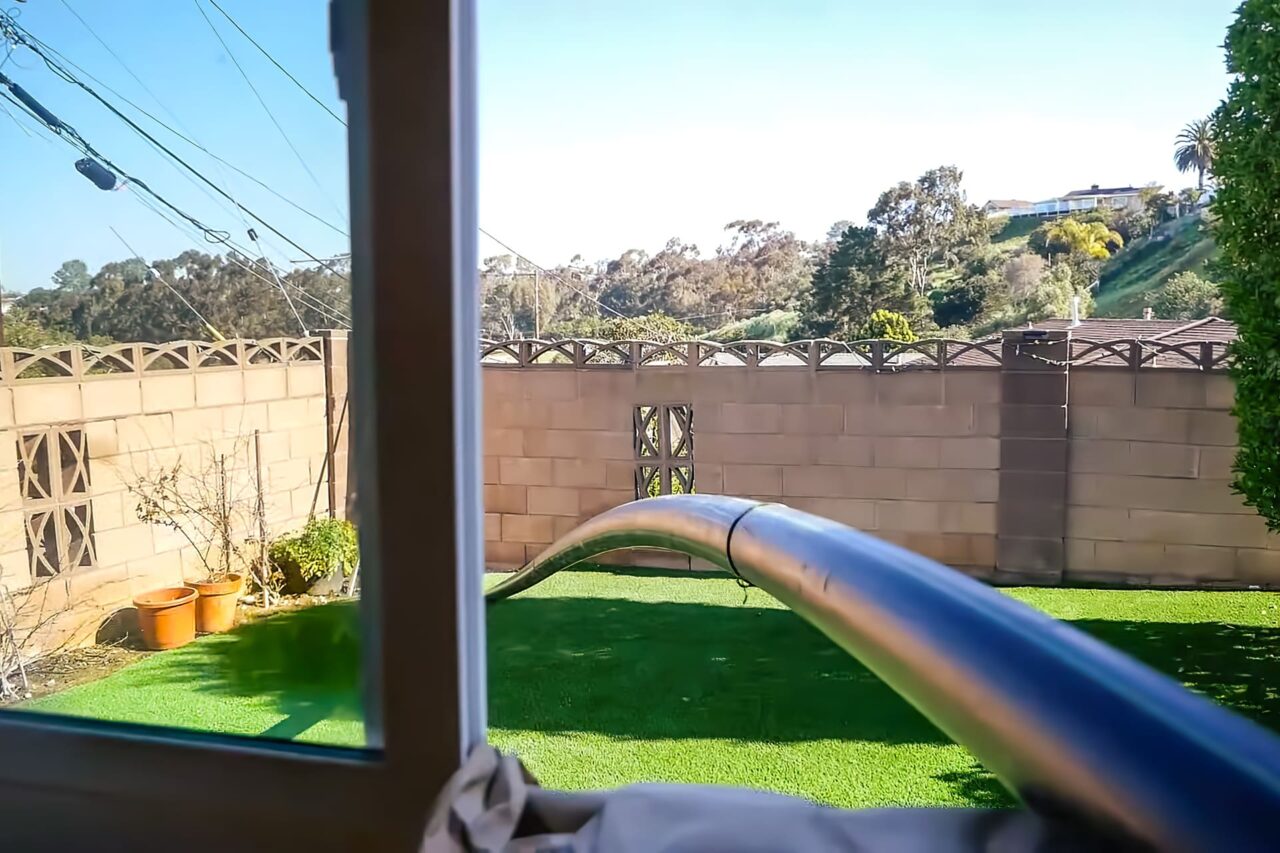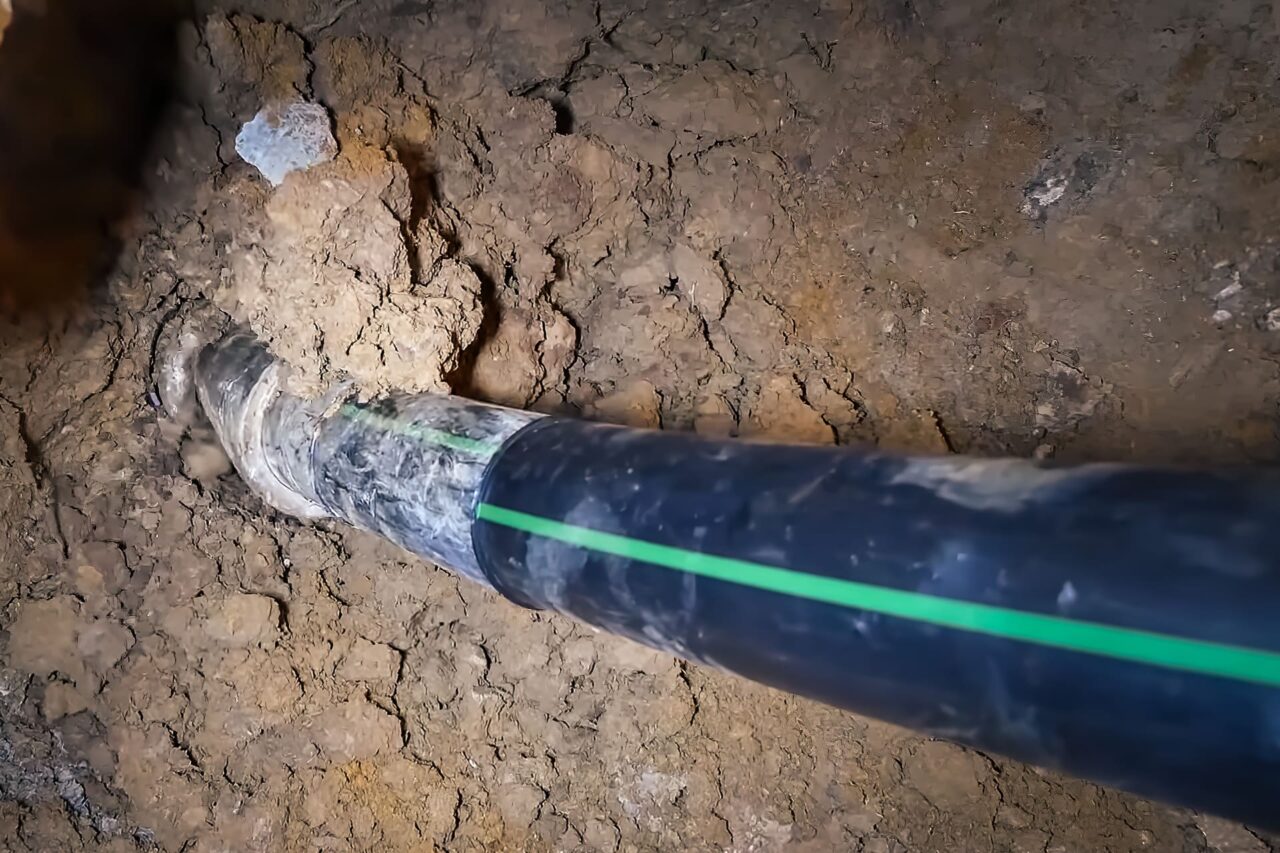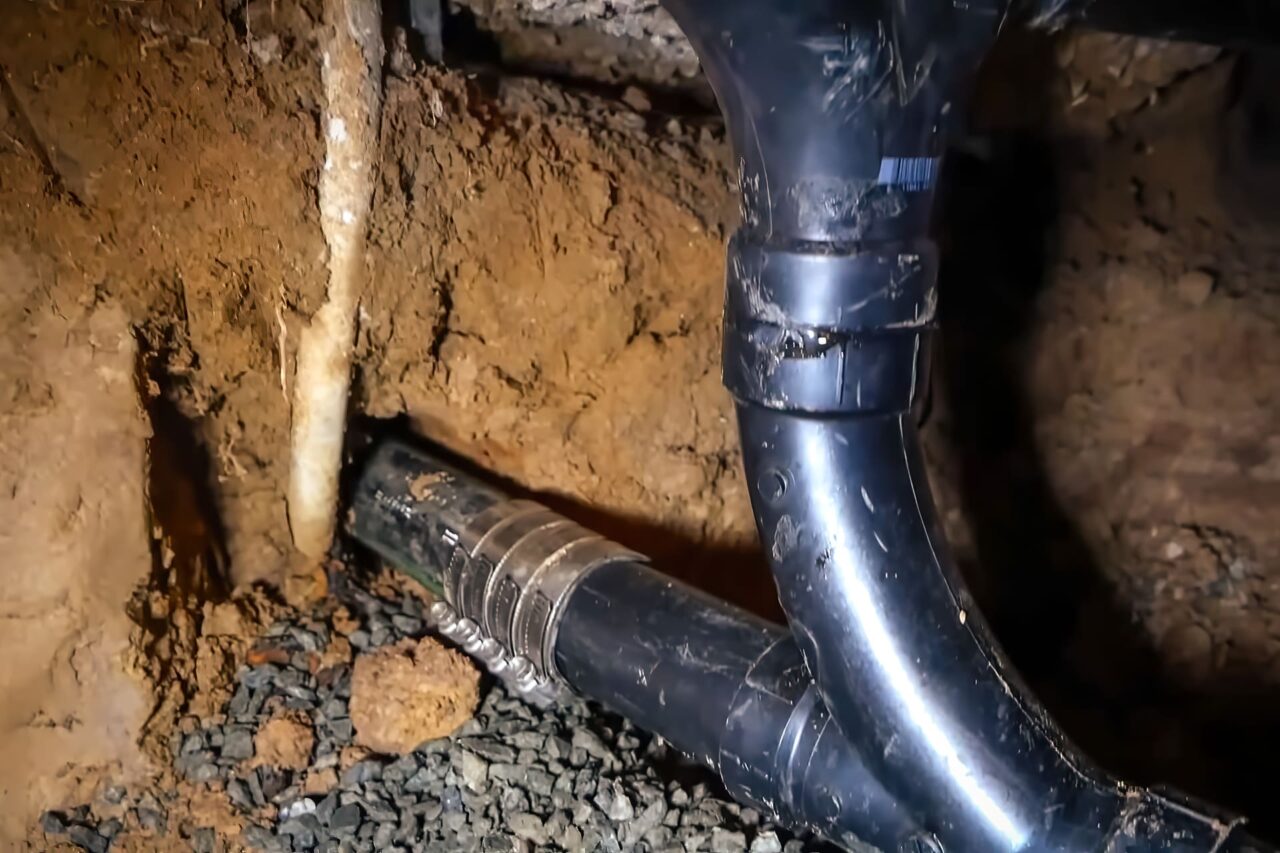How to Repipe Your Home’s Sewer System Without Damaging Floors, Creating Trenches, or Stress: Pipe Bursting Renovation!
Pipe bursting is an innovative trenchless technology ideally suited for replacing sewer piping in single-family households. It allows for laying completely new sewer pipes or drains with minimal floor demolition indoors and minimal trenching outdoors.
In this particular case, CEO of Almco Plumbing, Vlad Khorenko, meticulously described the stages of the pipe bursting job using a townhouse in San Diego as an example. He also addressed the technical difficulties encountered during the project and the solutions implemented by the Almco team.
Contents
Technologies & Services
Customer Issues & Respective Solutions
Initially, the issue involved wear and tear of the cast iron sewage pipes in a slab house featuring two bathrooms, a kitchen, and a main sewer line. This deterioration resulted in sewage leaks and severe flooding in both bathrooms.
As a solution, Almco recommended replacing the old sewage pipes and drains with new SDR-17 plastic or HDPE pipes using Pipe Bursting technology. This required creating two access points to the sewer system, including one inside a bathroom, which involved removing the flooring and plumbing fixtures in that room.
Consequently, after installing the new pipes, Almco also replaced all drains in the affected areas, including those for the toilet, shower, bathtub, and two sinks. These new drains were then connected to the newly installed main sewer pipe, which in turn was connected to the city’s sewer system.
Trenchless Sewer Pipe Replacement: Step-by-Step
Below, we thoroughly describe each stage of the project.
Preparation Stage
First, a thorough sewer system inspection was conducted using a CCTV camera (“optiwand”) to assess the condition of the pipes. The inspection was performed through a roof vent because the system lacked existing clean-outs. Following the inspection, Almco specialists developed a pipe refurbishment plan designed to preserve the exterior landscape and minimize interior demolition.
Demolition Work & Accessing the Old Pipe
Next, the floor in one of the bathrooms was demolished with a jackhammer to access the maintenance port of the old pipe. Using pipe bursting technology requires only two access points to install a new pipe.
The second access point was located in the front yard near the sidewalk, requiring a small trench to be dug.
Installing a New Pipe with Pipe Bursting Technology
Hydraulic equipment was utilized to insert a cable and a metallic bursting head (cone) into the old cast iron pipe, simultaneously fracturing the old pipe and pulling the new polyethylene SDR-17 pipe into place. The segments of plastic pipe were joined using thermal welding, ensuring water tightness and resistance to wear and tear.
The pipe installation was complicated by a wide concrete driveway and a concrete fence wall. To avoid damage to these structures, the decision was made to pull the new pipe from inside the bathroom outwards, subsequently connecting it to the city sewer system externally.
The main 50-foot sewer pipe was assembled from smaller SDR-17 segments using an electric thermo-welder. This technique creates exceptionally reliable and completely watertight connections. Before welding, pipe edges were carefully prepared by trimming, degreasing, heating, and then joining them with a manual horizontal press, resulting in sturdy welds and precisely assembled pipes of the required length.
The prepared sewer pipe was fed through a rear window into a room inside the house, then guided directly into the underfloor space of the bathroom. It was then secured in position using pipe bursting technology. The old 2-inch cast iron pipe in the kitchen was replaced using the same method.
Connecting Plumbing Fixtures to the New System
Immediately after the Almco team installed the main pipe under the house, new drains were connected from the kitchen, toilet, shower, and sinks. The old cast iron floor drains were also replaced with new PVC drains. All interior fixtures were properly connected to the main pipe, which was, in turn, linked to the city sewer system.
Service Access Manhole & Outdoor Restoration
After installing the pipes and connecting the home sewer to the city sewer system via the previously dug trench, two 5-foot maintenance access points (wells) were created and connected to the main pipe, allowing quick and easy sewer system access for maintenance. After confirming that the new system functioned correctly, the Almco team filled the trench, laid new grass over the restored area, and repaired the bathroom floor.
What Is Pipe Bursting & What Advantages Does It Have?
Pipe bursting technology is a trenchless pipeline replacement method in which the old pipe is fractured while simultaneously pulling a new pipe into the space created underground. It’s commonly used for the complete replacement of corroded or severely damaged pipes without requiring extensive trenching and excavation.
This significantly reduces surface damage and the time needed to complete the operation, making it particularly suitable for densely populated suburban and urban areas where traditional methods would involve dismantling roads, sidewalks, and other infrastructure.
Important note: In this specific scenario provided by Almco Plumbing, the pipe bursting method is suitable for pipes up to 150 feet in length and diameters ranging from 2 to 6 inches, with configurations of up to three 45-degree turns or one 90-degree and one 45-degree turn.
